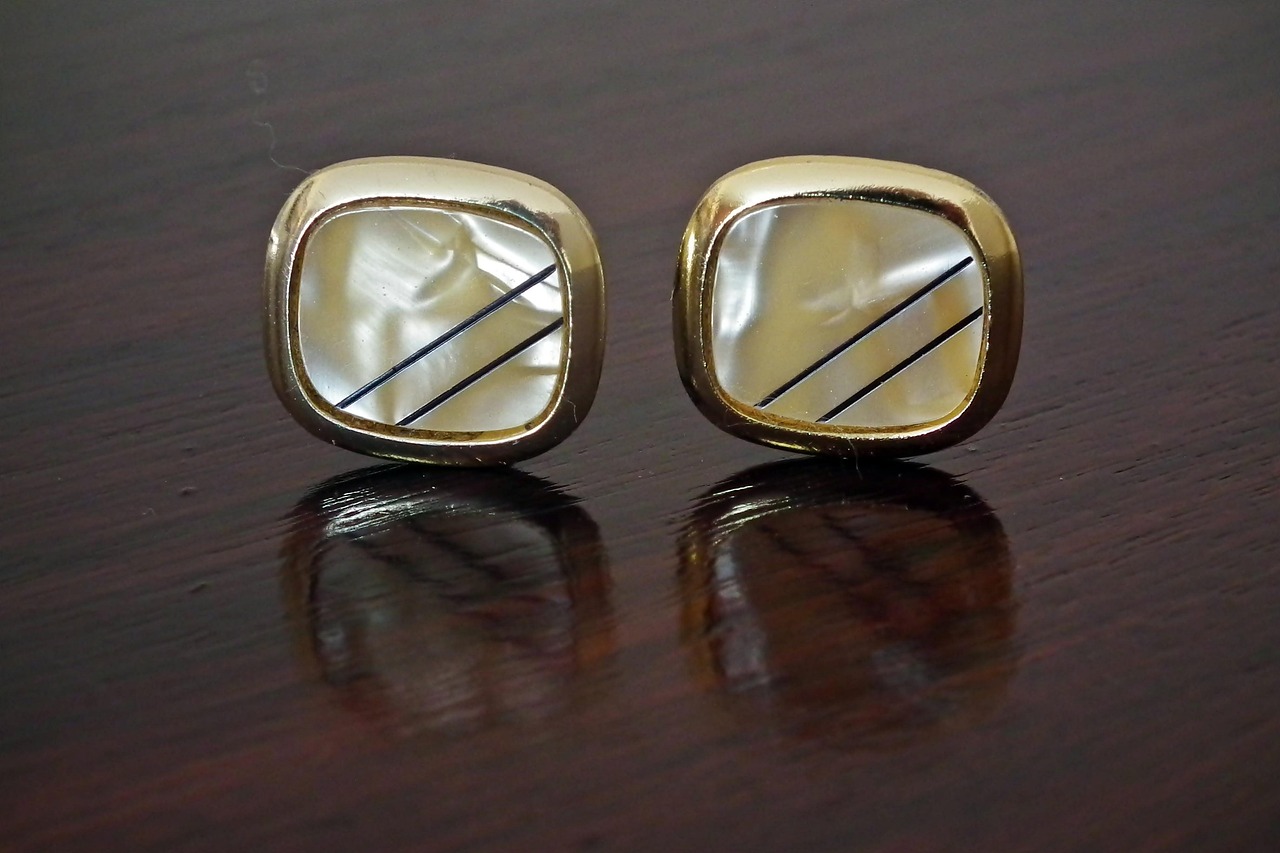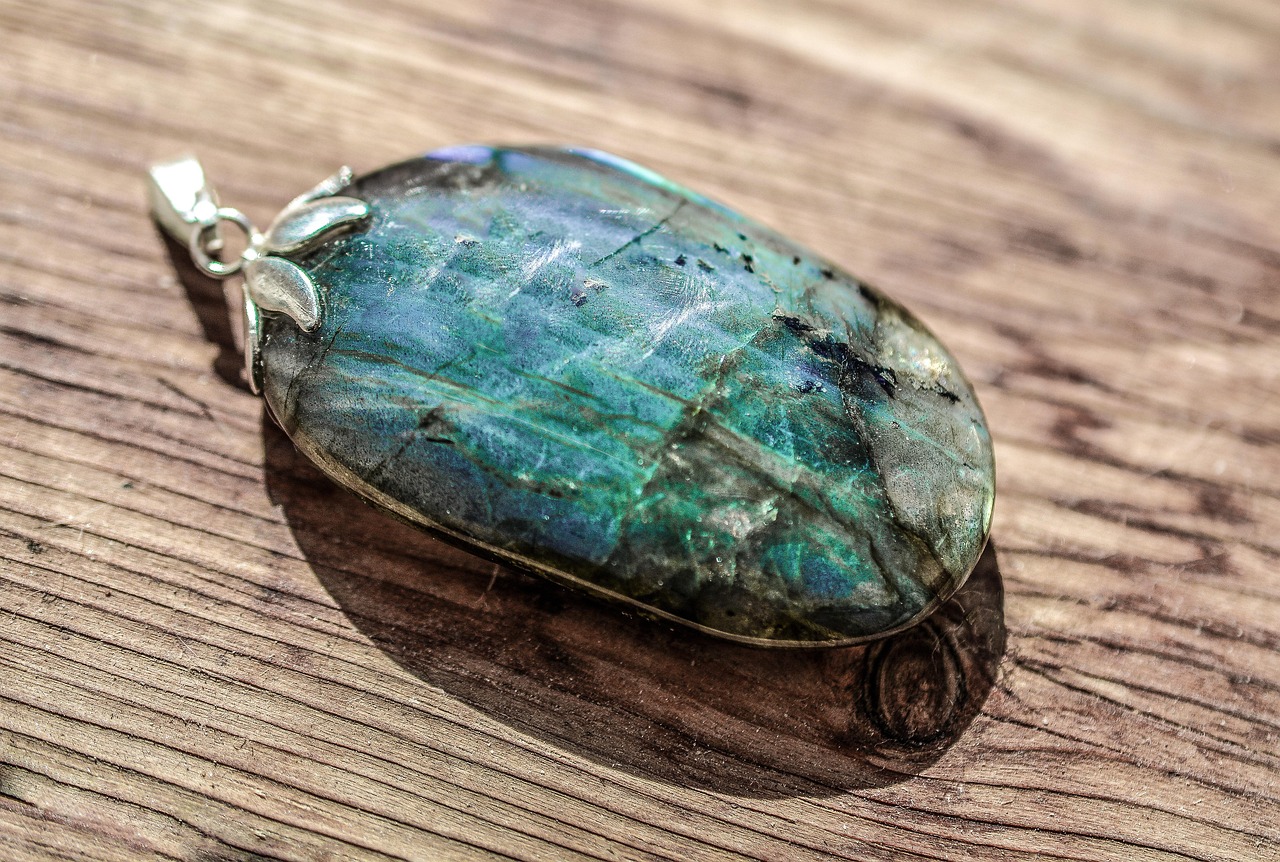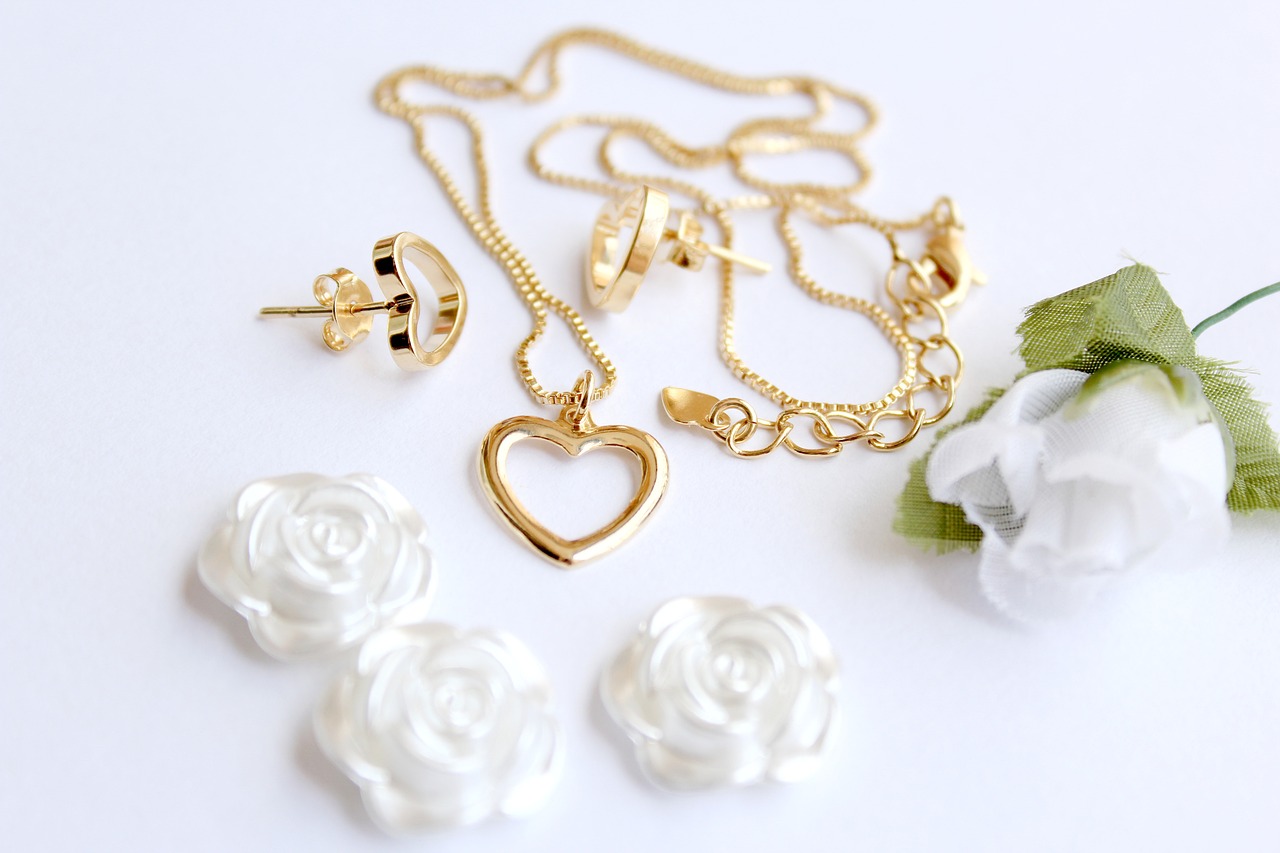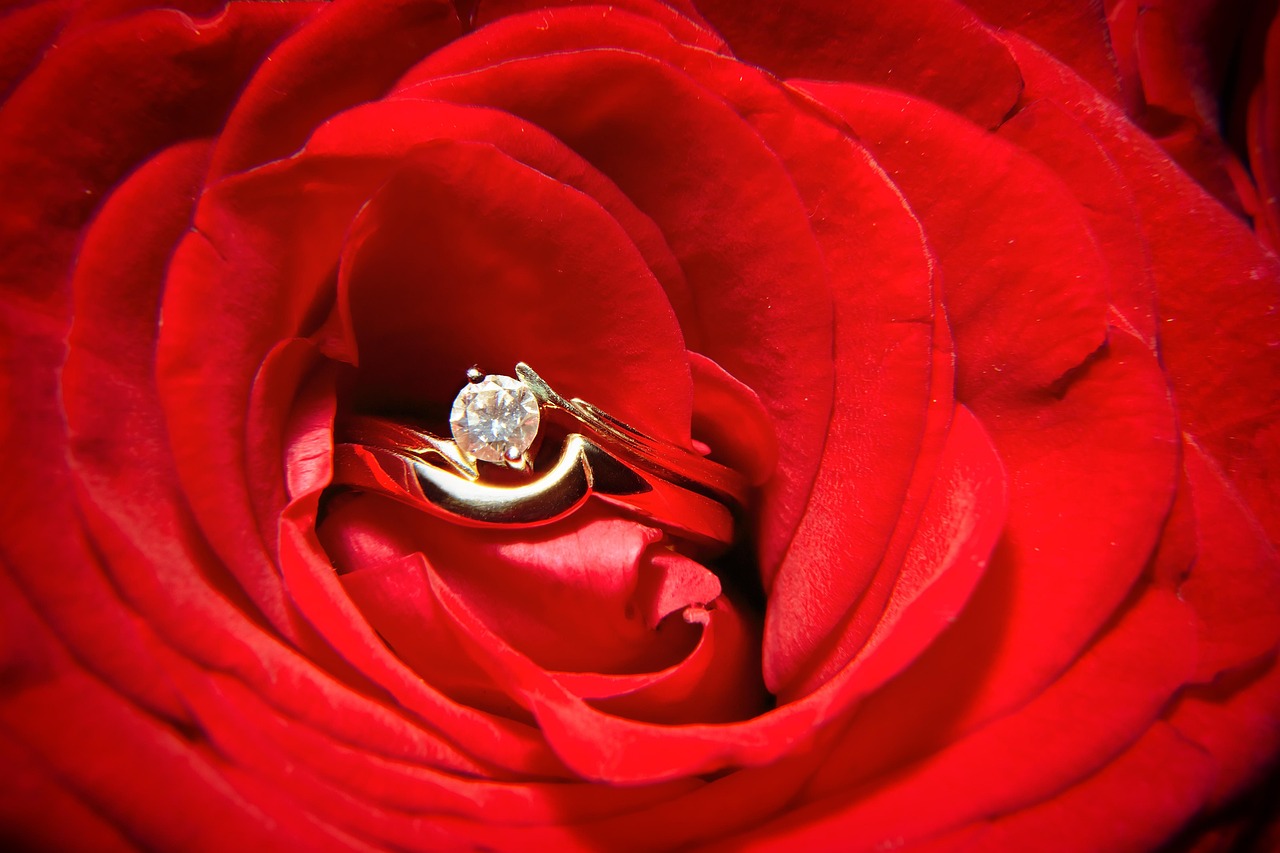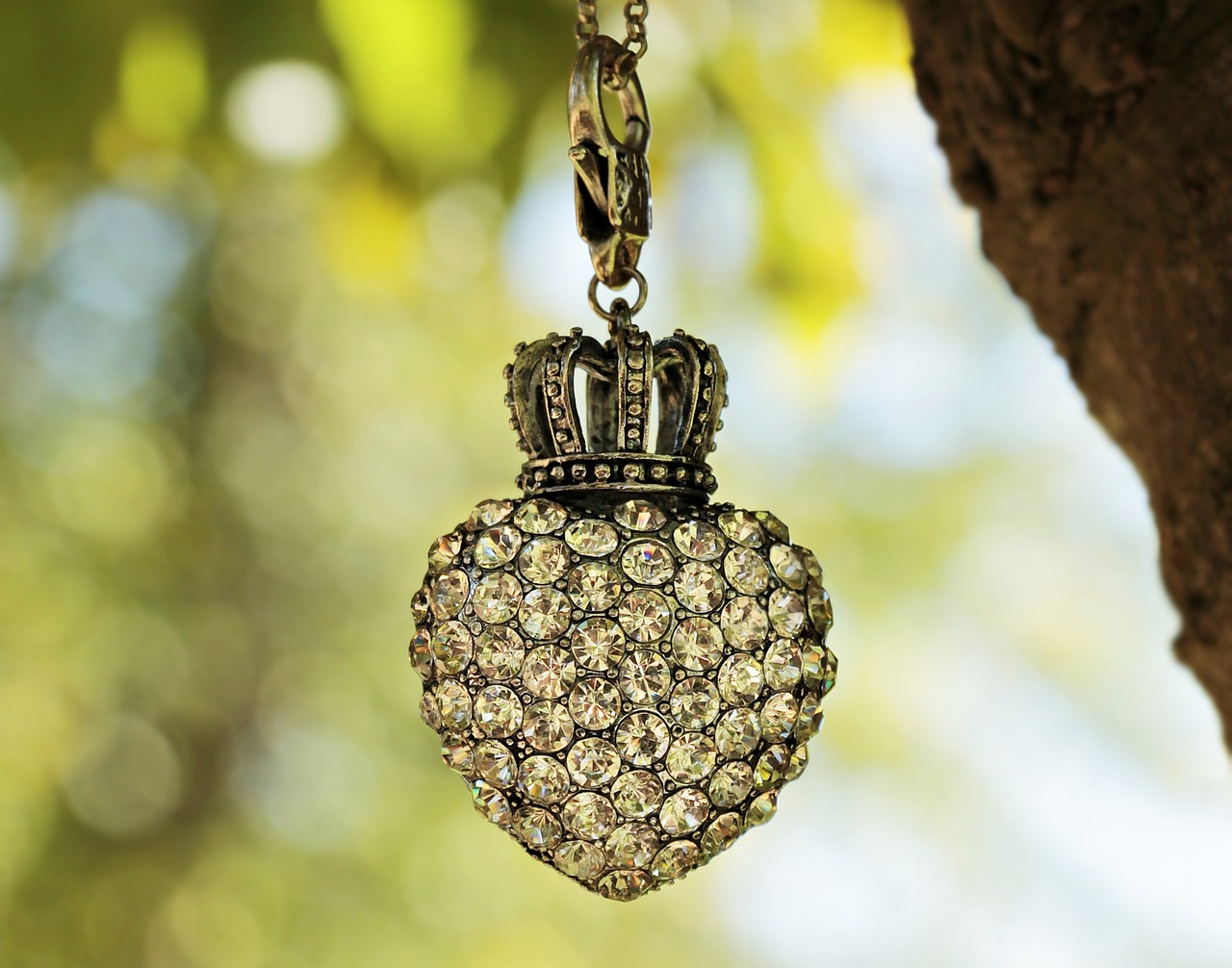Colored diamonds and white diamonds are both stunning in their own right, but when it comes to value retention, they present different stories. This article delves into the intricacies of how these two types of diamonds compare in terms of market trends, investment potential, and the various factors that influence their worth.
Colored diamonds are rare gemstones that come in a spectrum of colors, including blue, pink, yellow, and even green. The unique colors arise from specific chemical impurities and structural defects within the diamond’s crystal lattice. Their captivating hues not only make them visually striking but also significantly impact their market value.
White diamonds, also referred to as colorless diamonds, are the most prevalent type. Their value is primarily assessed through the 4Cs: cut, color, clarity, and carat weight. Each of these characteristics plays a crucial role in determining their market price and overall desirability.
The interplay between rarity and demand is vital in establishing the value of both colored and white diamonds. Understanding these dynamics can empower investors to make informed decisions regarding their purchases.
Colored diamonds are significantly rarer than their white counterparts. Certain colors, such as red and blue, are exceptionally scarce, leading to higher market values and greater investment potential. The rarity of specific hues can drive demand among collectors and investors alike.
Although white diamonds are more abundant, they continue to enjoy high demand, particularly in engagement rings and fine jewelry. Market trends can fluctuate, which may affect their resale value and overall investment appeal.
The value of colored diamonds is influenced by several key factors:
- Color Intensity: The more vivid the color, the higher the value.
- Hue: Different hues can command varying prices based on market trends.
- Saturation: The depth of color saturation can also impact desirability and price.
Understanding these characteristics is essential for potential buyers and investors.
Colored diamonds are graded based on hue, tone, and saturation. The grading system is crucial for determining their market value, making it important for buyers to familiarize themselves with these standards.
Certification from reputable gemological laboratories is essential for ensuring the authenticity and quality of colored diamonds. Such certifications significantly influence their market value, and buyers should prioritize certified diamonds to make sound investments.
Investing in colored diamonds can yield substantial returns, but it is not without its risks. The primary advantages include:
- Rarity: Their limited availability can lead to increased value over time.
- Popularity: Growing interest in colored diamonds can drive prices higher.
- High Returns: Certain colored diamonds have shown remarkable appreciation.
However, potential investors must also consider the risks, such as market volatility and the challenge of finding buyers.
White diamonds have long been regarded as a reliable investment due to their market stability and consistent demand. They are often seen as a safer choice for investors, particularly those seeking lower-risk options.
Historically, white diamonds have demonstrated steady value retention, making them a traditional investment choice. However, like any asset, they are not immune to market fluctuations that can impact resale value.
While white diamonds generally offer more stability, colored diamonds can provide higher returns due to their rarity and unique appeal. Investors must weigh these factors based on their financial goals and risk tolerance.
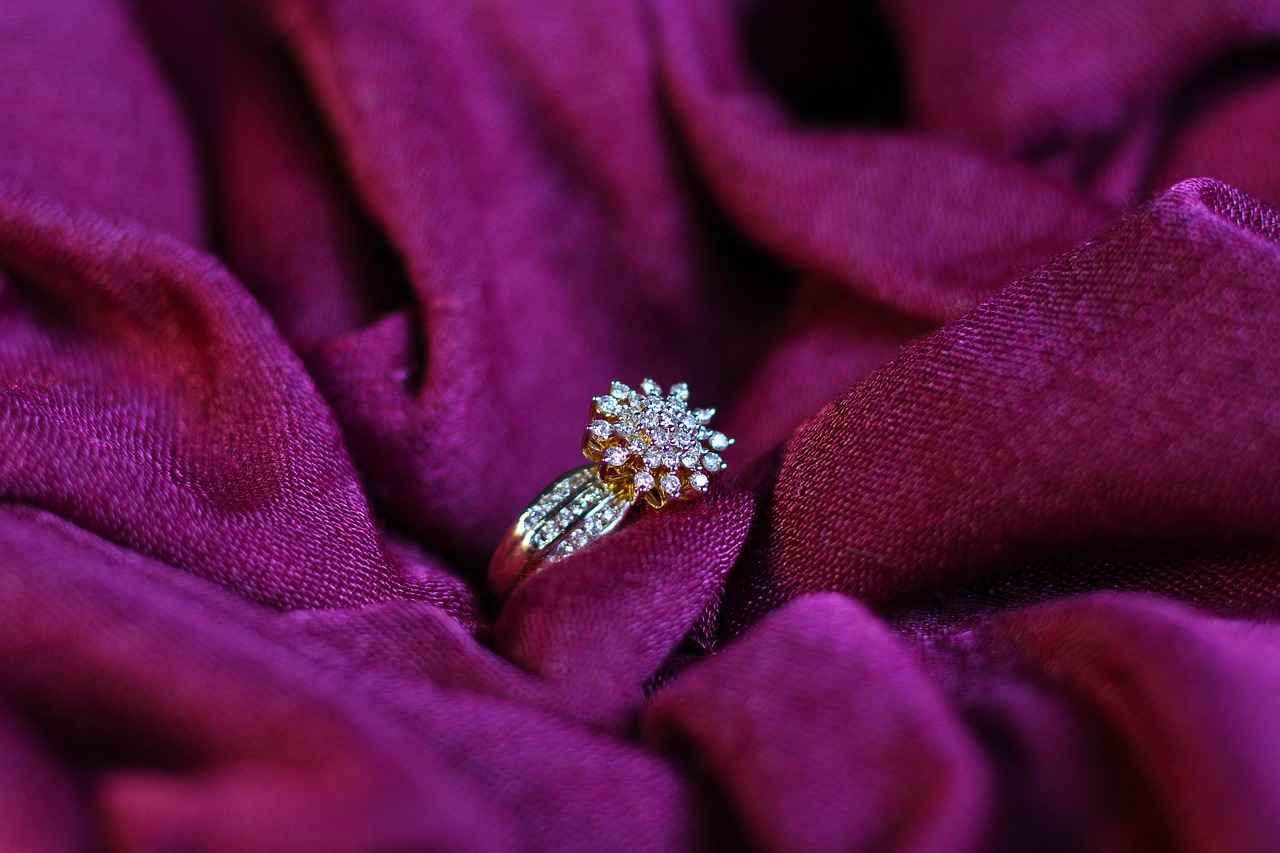
What Are Colored Diamonds?
Colored diamonds are among the most captivating and sought-after gemstones in the world. Unlike their colorless counterparts, these diamonds exhibit a stunning array of hues, ranging from deep blues and vibrant pinks to rich yellows and even rare reds. Their mesmerizing colors arise from specific chemical impurities and unique structural defects within the diamond’s crystal lattice. This distinct characteristic not only enhances their beauty but also contributes to their rarity and value in the market.
The uniqueness of colored diamonds is largely attributed to the specific conditions under which they form. For instance, the presence of boron during the diamond’s formation can lead to blue diamonds, while the presence of nitrogen results in yellow diamonds. These variations in color are not just visually striking; they also play a crucial role in determining the diamond’s worth. The rarity of certain colors, such as red and green, can drive prices significantly higher than those of more common colors.
Color grading is an essential aspect of evaluating colored diamonds. The grading system considers three primary factors: hue, tone, and saturation. Hue refers to the diamond’s primary color, tone describes the lightness or darkness of the color, and saturation indicates the intensity of the color. A diamond with a vivid hue and high saturation will typically command a higher price in the market. Therefore, potential buyers should familiarize themselves with these grading criteria to make informed purchasing decisions.
The market for colored diamonds has seen a significant surge in recent years, driven by increasing demand from collectors and investors alike. As consumers become more aware of the unique qualities and investment potential of colored diamonds, their popularity continues to rise. This growing interest has led to a steady appreciation in value, making them an attractive option for those looking to diversify their investment portfolios.
Several factors influence the value of colored diamonds, including:
- Rarity: The scarcity of certain colors can significantly enhance their market value.
- Color Quality: The intensity and purity of the color play a vital role in determining price.
- Certification: Diamonds that are certified by reputable gemological laboratories are generally more valuable, as they assure buyers of the diamond’s quality and authenticity.
Investing in colored diamonds presents both opportunities and challenges. On one hand, their rarity and increasing demand can lead to substantial returns. On the other hand, the market can be volatile, and potential investors must be cautious. Conducting thorough research and understanding the factors that affect value is crucial for anyone considering investing in these stunning gemstones.
While colored diamonds offer unique investment opportunities, white diamonds remain a popular choice for many investors due to their historical stability and consistent demand. The 4Cs—cut, color, clarity, and carat weight—are the primary factors influencing the value of white diamonds. However, as colored diamonds gain traction in the luxury market, they are increasingly seen as a viable alternative for investment.
In conclusion, colored diamonds are not just beautiful gemstones; they are also valuable assets that can appreciate over time. Their unique colors, rarity, and the growing interest in them make them an exciting option for both collectors and investors. Understanding the nuances of colored diamonds, including grading and market trends, is essential for making informed decisions in this fascinating sector of the gemstone market.

What Are White Diamonds?
White diamonds, often referred to as colorless diamonds, are the most prevalent type of diamond found in the market today. Their widespread availability does not diminish their allure; rather, it highlights their classic beauty and enduring appeal. These diamonds are coveted for their brilliance and clarity, making them a popular choice for various types of jewelry, especially engagement rings. The value of white diamonds is primarily determined by the 4Cs: cut, color, clarity, and carat weight. Each of these factors plays a crucial role in influencing their market price.
- Cut: The cut of a diamond refers to how well it has been shaped and faceted. A well-cut diamond reflects light beautifully, enhancing its sparkle and overall appearance.
- Color: Although white diamonds are classified as colorless, they can exhibit slight shades of yellow or brown. The less color present, the more valuable the diamond.
- Clarity: Clarity assesses the presence of internal or external flaws, known as inclusions and blemishes. Higher clarity grades indicate fewer imperfections, leading to increased value.
- Carat Weight: This measures the weight of the diamond. Larger diamonds are rarer and often more valuable, but the other Cs must also be considered for overall worth.
The market for white diamonds has shown resilience over the years, maintaining a steady demand, particularly for engagement rings and high-end jewelry. This demand is driven by cultural significance and the perception of white diamonds as timeless symbols of love and commitment. However, market trends can fluctuate based on economic conditions, consumer preferences, and the introduction of new diamond alternatives.
Investing in white diamonds can be a sound financial decision. Historically, they have demonstrated a consistent value retention, making them a safer investment compared to other gemstones. However, potential investors should remain vigilant about market changes and seek diamonds with high-quality attributes to ensure a robust investment.
When selecting a white diamond, it is essential to consider personal preferences alongside the 4Cs. Buyers should also seek diamonds that come with certification from reputable gemological laboratories. This certification verifies the diamond’s quality and authenticity, providing peace of mind for the investment.
In conclusion, while white diamonds may be more common than their colored counterparts, they continue to hold significant value in the market. Their classic appeal, combined with their established reputation for stability, makes them an attractive option for both personal adornment and investment. As with any investment, thorough research and understanding of market dynamics are crucial for making informed decisions.

How Do Rarity and Demand Affect Diamond Value?
The diamond market is a fascinating world where rarity and demand play pivotal roles in determining the value of both colored and white diamonds. Understanding these factors is essential for investors and collectors alike, as they navigate the complexities of this luxurious commodity.
The value of diamonds is not solely based on their physical characteristics; rather, it is significantly influenced by their rarity and the demand they generate in the market. While both colored and white diamonds can be valuable, the dynamics surrounding their worth differ considerably.
Colored diamonds are inherently rare due to their unique formation processes. Unlike white diamonds, which are more abundant, colored diamonds derive their hues from specific chemical impurities and structural defects within the diamond’s crystal lattice. For instance, blue diamonds get their color from the presence of boron, while pink diamonds owe their hue to a distortion in their crystal structure. This uniqueness not only makes colored diamonds scarce but also highly sought after, driving their market value up significantly.
White diamonds, also known as colorless diamonds, have maintained high demand for decades, primarily due to their association with tradition and romance. Used predominantly in engagement rings, their popularity ensures a stable market. However, demand can fluctuate based on changing consumer preferences and economic conditions. For example, during economic downturns, the demand for luxury items, including white diamonds, may wane, impacting their resale value.
While rarity can drive up prices, it is the demand that ultimately determines how much buyers are willing to pay. For instance, a rare colored diamond may not fetch a high price if the demand is low, while a more common white diamond might still hold significant value due to consistent demand. This balancing act is crucial for investors to understand when making purchasing decisions.
- Market Trends: Changes in fashion and consumer preferences can directly affect demand.
- Economic Conditions: In times of economic prosperity, luxury items see increased demand.
- Cultural Significance: Events such as weddings and anniversaries drive demand for diamonds.
Investors should consider both rarity and demand when assessing the potential value of diamonds. Consulting with gemological experts and utilizing certification services can provide insights into the authenticity and quality of diamonds, which are crucial for making informed investment decisions. Additionally, staying updated on market trends can help investors anticipate shifts in demand.
Understanding the interplay between rarity and demand is vital for anyone looking to invest in diamonds. While colored diamonds offer the allure of rarity, white diamonds provide stability and consistent demand. By analyzing these factors, investors can make informed choices that align with their financial goals and risk tolerance.
Why Are Colored Diamonds Considered Rare?
Colored diamonds are a fascinating and highly sought-after category of gemstones, known for their stunning hues and remarkable rarity. The allure of these diamonds extends beyond their beauty; they represent a unique investment opportunity in the world of fine jewelry. In this section, we delve into the reasons behind the rarity of colored diamonds, their market implications, and why they are increasingly valued by collectors and investors alike.
Colored diamonds are significantly rarer than their white counterparts. While white diamonds are abundant and widely available, colored diamonds are formed under specific geological conditions that are not commonly found. This leads to a limited supply of colored diamonds in the market. Certain colors, such as red, blue, and green, are exceptionally scarce, making them highly coveted among collectors.
The value of colored diamonds is heavily influenced by their color intensity, hue, and saturation. For instance, a vivid blue diamond can fetch prices that are exponentially higher than a light blue variant. The grading of these colors is critical; the more intense and pure the color, the greater the value. This grading system is essential for potential buyers and investors to understand, as it directly impacts market pricing.
The demand for colored diamonds has been on the rise, particularly among affluent collectors and investors. As the market for luxury goods expands, colored diamonds are increasingly seen as a viable investment option. Their rarity often translates to higher market values, making them appealing not just for personal adornment but also as a form of investment. Investors are drawn to the idea that these diamonds can appreciate significantly over time, especially as supply diminishes.
The unique colors of diamonds are a result of natural impurities and structural defects within the diamond’s crystal lattice. For example, the presence of boron creates blue diamonds, while nitrogen can lead to yellow or brown hues. This natural process not only contributes to the diamond’s color but also enhances its rarity. The more unique the impurity, the rarer the diamond, leading to a higher price point in the market.
Certification from reputable gemological laboratories plays a crucial role in the valuation of colored diamonds. Certifications ensure that the diamonds are authentic and provide details about their color grading, clarity, and overall quality. Buyers are advised to seek certified diamonds to make informed purchasing decisions and to ensure they are investing in genuine stones. This certification process adds an additional layer of trust and value to colored diamonds.
As awareness and appreciation for colored diamonds grow, market trends indicate a potential increase in their value. Collectors and investors are becoming more educated about the benefits of investing in rare gemstones, leading to a burgeoning market. Experts predict that as more people recognize the investment potential of colored diamonds, demand will continue to rise, further driving up prices.
In conclusion, the rarity of colored diamonds is a multifaceted phenomenon influenced by geological factors, market demand, and the unique characteristics of each stone. As the market evolves, these diamonds are not just a symbol of luxury but also a promising investment opportunity for those looking to diversify their portfolios.
How Does Demand Impact White Diamonds?
When it comes to the world of diamonds, demand plays a pivotal role in shaping market trends, particularly for white diamonds. While these gems are more abundant than their colored counterparts, their appeal remains strong, especially in the realm of engagement rings. This article delves into how demand impacts the value and desirability of white diamonds, considering various factors that contribute to their market stability.
The demand for white diamonds is primarily driven by their cultural significance and timeless appeal. Traditionally, white diamonds have been associated with love, commitment, and luxury. As a result, they have become a staple in engagement rings, leading to a consistent demand that often outweighs supply. This cultural preference ensures that white diamonds maintain their value over time.
While white diamonds have a strong market presence, demand can fluctuate due to several factors:
- Fashion Trends: Changes in consumer preferences can influence demand. For instance, the rise in popularity of colored diamonds and alternative gemstones can divert attention from traditional white diamonds.
- Economic Conditions: During economic downturns, luxury goods, including diamonds, may see a decline in demand. Conversely, in a thriving economy, the demand for high-quality white diamonds may surge as consumers feel more financially secure.
- Marketing and Branding: Effective marketing campaigns by jewelers can significantly impact consumer perception and demand. The promotion of white diamonds as the ultimate symbol of love can bolster their desirability.
Another critical aspect of demand for white diamonds is their resale value. Investors and consumers alike consider the potential return on investment when purchasing diamonds. While white diamonds generally retain their value, market fluctuations can affect their resale prices. If consumers perceive that white diamonds are a sound investment, demand will likely remain high.
As buyers become more informed about the diamond industry, their preferences may shift. Increased awareness regarding the 4Cs (cut, color, clarity, and carat weight) can lead consumers to make more educated decisions. This knowledge can enhance the demand for higher-quality white diamonds, as buyers seek gems that not only look stunning but also hold their value.
Historically, white diamonds have demonstrated a strong track record for value retention. Their consistent demand in the market, coupled with their traditional associations, makes them a reliable choice for investors. However, it is essential to note that the market is not immune to changes, and potential buyers should stay informed about current trends and economic conditions.
In summary, the demand for white diamonds is influenced by cultural significance, market trends, and consumer education. While they remain a popular choice for engagement rings and luxury purchases, potential investors should consider the various factors that can impact their value. By understanding these dynamics, buyers can make informed decisions in the ever-evolving diamond market.

What Factors Influence the Value of Colored Diamonds?
When considering the investment potential of colored diamonds, it is essential to understand the various factors that influence their value. Unlike traditional white diamonds, the worth of colored diamonds is not solely determined by the 4Cs (cut, color, clarity, and carat weight). Instead, several unique characteristics play a crucial role in shaping their market price and desirability.
The intensity of a colored diamond’s hue can significantly impact its value. Diamonds with a more vivid and saturated color are often more sought after. For instance, a deep blue diamond will typically command a higher price than a lighter blue diamond. The grading system for colored diamonds considers this intensity, categorizing them from faint to vivid. The more intense the color, the more valuable the diamond becomes.
Hue refers to the actual color of the diamond, such as pink, blue, or yellow. Within these categories, there are numerous shades and variations. For example, a pink diamond can range from light pink to a deep, rich pink. The rarity of specific hues can also drive up demand and price. Rare colors like red and green often fetch astronomical prices at auctions, while more common colors like yellow and brown may not hold the same value.
Saturation describes the purity and richness of a diamond’s color. A diamond with high saturation appears more vivid and captivating. Buyers often prefer stones with a higher saturation level, which can lead to increased market prices. Understanding how saturation works in conjunction with hue and intensity is essential for potential buyers and investors.
The market for colored diamonds is influenced by current trends and consumer preferences. As certain colors gain popularity, their values can rise. For example, in recent years, there has been a growing interest in pink diamonds, leading to increased prices. Keeping an eye on market trends can provide valuable insights for potential investors.
Certification from reputable gemological laboratories is crucial in determining a colored diamond’s value. A certified diamond comes with a detailed report that outlines its characteristics, including color, clarity, and carat weight. This certification assures buyers of the diamond’s authenticity and quality, often leading to higher market prices. Investors should prioritize certified diamonds to ensure they are making informed purchases.
Rarity is perhaps one of the most significant factors affecting the value of colored diamonds. Certain colors are exceedingly rare, making them highly desirable among collectors and investors. For instance, red diamonds are among the rarest gemstones in the world, with only a handful of stones available on the market. This scarcity often translates into exceptionally high prices at auctions and retail sales.
Investors looking to purchase colored diamonds should consider not only the factors mentioned above but also their long-term investment potential. The rarity and desirability of certain colors can lead to significant appreciation over time. However, potential buyers should conduct thorough research and consult with experts to understand the market dynamics and make informed decisions.
In summary, the value of colored diamonds is influenced by a combination of factors, including color intensity, hue, saturation, market trends, certification, and rarity. Understanding these elements is crucial for anyone looking to invest in these stunning gemstones, as they can significantly affect their market price and desirability.
How Is Color Graded in Colored Diamonds?
Understanding how color is graded in colored diamonds is crucial for anyone interested in purchasing or investing in these unique gemstones. The grading system evaluates various aspects of color, including hue, tone, and saturation. Each of these elements plays a vital role in determining the overall value of the diamond.
Hue refers to the actual color of the diamond, such as blue, pink, or yellow. Each hue can have variations, and the presence of secondary colors can enhance or diminish the primary hue. For example, a diamond may be described as a “pinkish orange” if it displays both pink and orange characteristics. The more intense and pure the hue, the more valuable the diamond becomes.
Tone describes the lightness or darkness of the color. It ranges from light to dark, with various shades in between. A diamond with a medium tone is often considered more desirable, as it provides a balance between visibility and depth of color. A light-toned diamond may lack the vibrancy that collectors seek, while a dark-toned diamond can sometimes appear murky and less appealing.
Saturation measures the intensity or purity of the color. It assesses how vivid or muted the color appears. A diamond with high saturation displays a rich and vibrant color, making it more valuable. Conversely, diamonds with low saturation may appear washed out or dull, which can significantly reduce their market price. The combination of high hue, medium tone, and high saturation typically results in the most sought-after diamonds.
For potential buyers and investors, understanding these grading parameters is essential. A well-graded colored diamond can command a premium price, while a poorly graded one may not hold its value. Buyers should educate themselves on these grading systems to make informed decisions, ensuring they invest in diamonds that will appreciate over time.
Certification from reputable gemological laboratories, such as the Gemological Institute of America (GIA) or the International Gemological Institute (IGI), provides an objective assessment of a diamond’s color grade. These reports include detailed descriptions of the diamond’s hue, tone, and saturation, along with other quality factors. Buyers should always seek certified diamonds to verify their investment’s authenticity and value.
The market for colored diamonds has been growing, with increasing demand driving up prices. Collectors and investors are particularly interested in rare colors, such as red and blue, which can appreciate significantly over time. Understanding the grading system allows buyers to identify diamonds that are not only beautiful but also likely to retain or increase in value.
In summary, the grading of colored diamonds based on hue, tone, and saturation is a complex but essential aspect of the diamond market. By understanding these factors, buyers can make informed decisions that align with their investment goals and aesthetic preferences.
What Role Does Certification Play in Valuation?
The value of diamonds, particularly colored diamonds, is influenced by several critical factors, one of which is certification. Understanding the role of certification in the valuation of these precious stones is essential for buyers and investors alike.
Certification refers to the process by which a diamond is evaluated and graded by a reputable gemological laboratory. These laboratories assess various characteristics of the diamond, including its cut, color, clarity, and carat weight, which are crucial determinants of its value. The resulting certificate serves as an official document that verifies the diamond’s quality and authenticity.
Colored diamonds are particularly unique, and their value can greatly fluctuate based on their specific characteristics. Certification from respected laboratories, such as the Gemological Institute of America (GIA) or the International Gemological Institute (IGI), is vital for several reasons:
- Authenticity Assurance: Certification ensures that the colored diamond you are purchasing is genuine and not a treated stone or imitation.
- Value Determination: The grading provided in the certificate helps in understanding the diamond’s market value, making it easier for buyers to make informed decisions.
- Investment Security: Certified diamonds are often more appealing to investors, as they offer a level of security and assurance regarding their quality and potential resale value.
When it comes to colored diamonds, market dynamics can be complex. The certification plays a pivotal role in influencing their market value:
- Increased Demand: Certified colored diamonds are more sought after, as buyers prefer stones that come with a guarantee of quality. This increased demand can drive up prices.
- Transparency: A certification provides transparency in the buying process, allowing buyers to compare stones based on their graded attributes, leading to more competitive pricing.
- Resale Potential: Certified diamonds tend to retain their value better in the resale market, as future buyers are more likely to trust the grading provided by a reputable laboratory.
When considering a colored diamond, buyers should ensure that the certification comes from a well-known laboratory. Here are a few key points to consider:
- Laboratory Reputation: Choose certifications from established and reputable laboratories that are recognized in the industry.
- Detailed Grading Report: Look for a comprehensive grading report that includes specific details about the diamond’s color, clarity, and other critical attributes.
- Secure Certification: Ensure that the certification includes security features to prevent counterfeiting, such as holograms or unique identification numbers.
Investors in colored diamonds should prioritize certified stones, as the certification can significantly affect their investment strategy:
- Market Confidence: Investing in certified diamonds can enhance market confidence, as these stones are more likely to appreciate in value over time.
- Risk Mitigation: A certified diamond reduces the risk of purchasing a stone that may not hold its value or could be misrepresented.
- Portfolio Diversification: Incorporating certified colored diamonds into an investment portfolio can provide diversification, potentially leading to higher returns compared to traditional investments.
In conclusion, certification plays a crucial role in the valuation of colored diamonds. It not only ensures authenticity and quality but also influences market value and investment decisions. Buyers and investors should always seek certified diamonds to make informed choices and secure their investments.
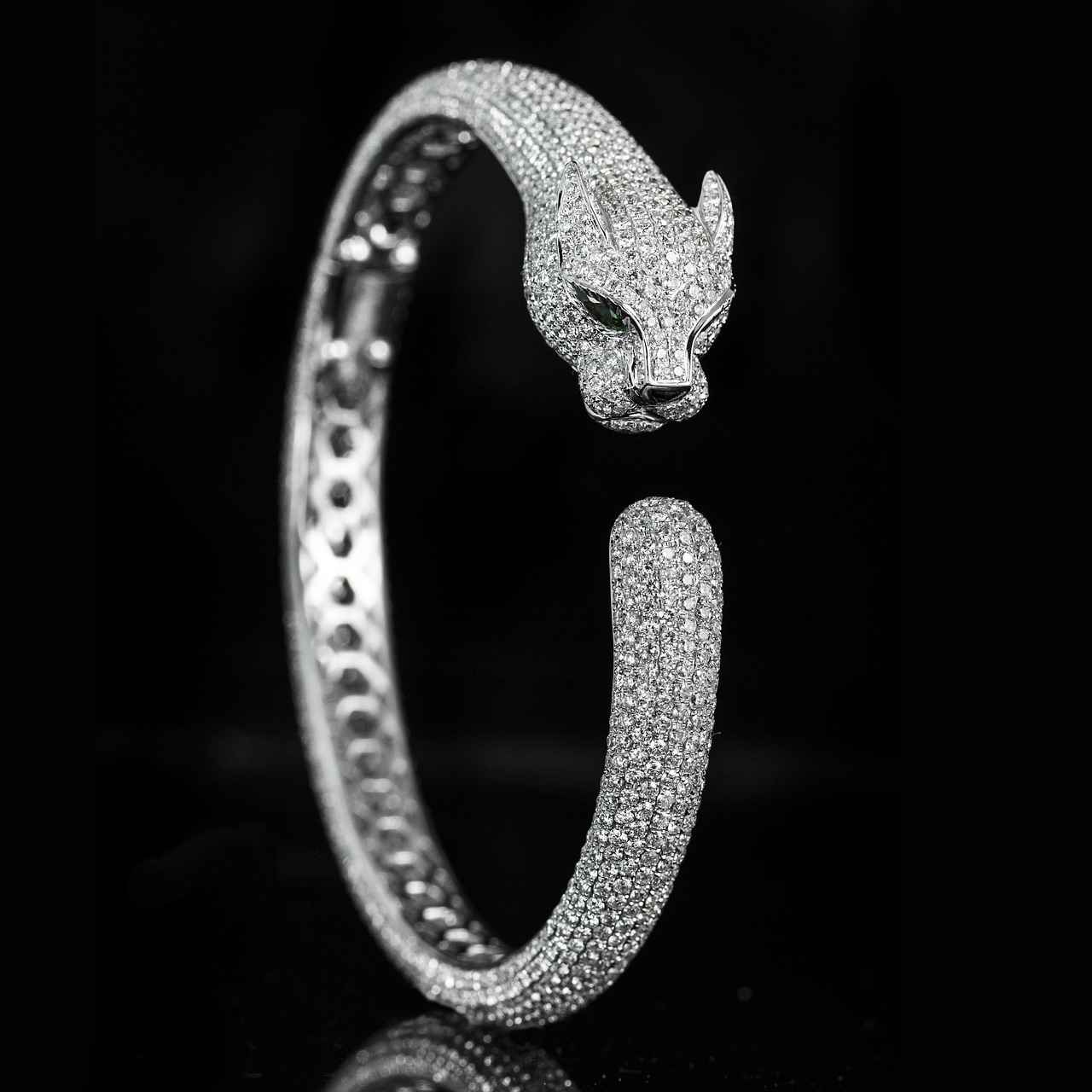
What Are the Investment Pros and Cons of Colored Diamonds?
Investing in colored diamonds has gained traction among collectors and investors alike, thanks to their unique beauty and potential for high returns. However, like any investment, it comes with its own set of advantages and disadvantages. Understanding these pros and cons is essential for anyone considering entering this niche market.
- Rarity: Colored diamonds are significantly rarer than their colorless counterparts. For instance, blue and pink diamonds are among the rarest, making them highly sought after and valuable.
- Increasing Popularity: As more people become aware of the investment potential of colored diamonds, demand has surged. This trend is likely to continue, further driving up prices.
- High Return Potential: Historical data suggests that certain colored diamonds have appreciated in value significantly over time, often outperforming traditional investments like stocks and bonds.
- Unique Aesthetic Appeal: Beyond investment potential, colored diamonds are visually stunning, making them desirable for personal collections and jewelry.
- Market Volatility: The market for colored diamonds can be unpredictable. Prices may fluctuate based on trends, economic conditions, and consumer preferences.
- Overvaluation Risks: With rising popularity, some investors may overpay for diamonds based on hype rather than actual value. It’s crucial to conduct thorough research and seek expert advice.
- Finding Buyers: While the market for colored diamonds is growing, finding a buyer willing to pay a premium can be challenging, especially for less popular colors.
- Lack of Transparency: The colored diamond market can lack the transparency found in other investment sectors, making it difficult for investors to gauge true value.
To maximize the potential for returns while minimizing risks, investors should consider the following strategies:
- Conduct Thorough Research: Understanding market trends, color popularity, and historical price performance is crucial.
- Seek Expert Guidance: Consulting with gemologists or investment advisors who specialize in colored diamonds can provide valuable insights.
- Invest in Certified Diamonds: Ensure that any colored diamond purchased comes with certification from a reputable gemological laboratory, which can validate its quality and authenticity.
- Diversify Your Portfolio: Rather than investing solely in colored diamonds, consider spreading investments across various asset classes to reduce risk.
Before diving into the colored diamond market, potential investors should reflect on their financial goals, risk tolerance, and the time frame for their investment. Colored diamonds can be a rewarding investment, but they require a willingness to navigate the complexities of the market.
In conclusion, investing in colored diamonds presents both unique opportunities and challenges. By understanding the advantages and risks, and by taking a thoughtful approach to investment, individuals can make informed decisions that align with their financial objectives.
What Are the Advantages of Investing in Colored Diamonds?
Investing in colored diamonds has gained significant traction in recent years, drawing the attention of both seasoned investors and newcomers alike. As the market evolves, understanding the advantages of colored diamonds can provide valuable insights for potential buyers.
One of the most compelling reasons to invest in colored diamonds is their rarity. Unlike traditional white diamonds, colored diamonds are found in a spectrum of hues, including shades of blue, pink, green, and even red. The limited availability of these precious stones means that certain colors can command exceptionally high prices. For instance, blue diamonds are renowned for their scarcity, making them a sought-after investment.
As awareness of colored diamonds grows, so does their popularity. Celebrities and influencers often showcase these unique stones, further fueling interest among consumers. This rising demand can significantly impact their market value. As more people seek to own colored diamonds, prices are likely to appreciate over time, providing investors with the potential for high returns.
The investment potential of colored diamonds is another significant advantage. Historical data indicates that certain colored diamonds have appreciated in value far beyond traditional investments. For example, pink diamonds have seen remarkable price increases over the past few decades, making them a lucrative option for investors. As demand continues to grow, the value appreciation of these diamonds can lead to substantial financial gains.
Colored diamonds also offer a way to diversify an investment portfolio. While traditional assets like stocks and bonds can be volatile, colored diamonds provide a tangible asset that can retain value. This diversification can help mitigate risks associated with market fluctuations, making colored diamonds an appealing choice for investors looking to balance their portfolios.
In addition to their financial benefits, colored diamonds hold emotional and aesthetic value. Many buyers are drawn to the beauty and uniqueness of these stones, making them a cherished addition to any jewelry collection. This emotional connection can enhance the overall investment experience, as owners enjoy the beauty of their diamonds while also benefiting from their potential financial growth.
Understanding market trends is crucial for any investor. The colored diamond market has shown resilience even during economic downturns, indicating that these stones can be a stable investment choice. Monitoring auction results and sales trends can provide valuable insights into which colors and qualities are currently in demand, allowing investors to make informed decisions.
When investing in colored diamonds, obtaining proper certification is essential. Reputable gemological laboratories provide grading reports that confirm the authenticity and quality of the diamonds. This certification not only assures buyers of the diamond’s value but also enhances its resale potential. Investors should prioritize certified stones to ensure they are making sound investments.
In summary, the advantages of investing in colored diamonds are numerous, ranging from their rarity and increasing popularity to their potential for high returns and emotional value. As the market continues to evolve, staying informed and seeking expert advice can help investors navigate this unique and rewarding investment landscape.
What Are the Risks Involved with Colored Diamond Investments?
Investing in colored diamonds can be an enticing opportunity for both seasoned investors and newcomers alike. However, like any investment, it comes with its own set of challenges and risks. Understanding these risks is crucial for making informed decisions that align with your financial goals.
One of the most significant risks associated with colored diamond investments is market volatility. The prices of these unique gemstones can fluctuate widely based on various factors, including economic conditions, consumer demand, and even fashion trends. Investors should be prepared for potential price swings, which can affect the overall return on investment.
Another risk to consider is the potential for overvaluation. As colored diamonds gain popularity, some investors may be tempted to pay inflated prices. It is essential to conduct thorough research and rely on credible sources to ensure that you are not overpaying for a diamond. Understanding the market value of similar stones can help mitigate this risk.
Unlike more traditional investments, selling colored diamonds can be challenging. The challenge of finding buyers is compounded by the fact that not all diamonds are created equal. The rarity and unique characteristics of each colored diamond can make it difficult to find a willing buyer at the desired price. This factor can lead to prolonged holding periods, which may not align with an investor’s liquidity needs.
To navigate these risks effectively, investors must conduct thorough research. This includes understanding the specific characteristics that affect a diamond’s value, such as color intensity, hue, and saturation. Additionally, consulting with experts and obtaining certifications from reputable gemological laboratories can provide assurance regarding the quality and authenticity of the diamonds.
Investors should also keep an eye on market trends and economic conditions that could impact the demand for colored diamonds. Economic downturns can lead to decreased consumer spending, affecting the resale value of these gems. Staying informed about the broader economic landscape will help investors make timely decisions.
Lastly, diversifying your investment portfolio can help mitigate risks associated with colored diamonds. By spreading investments across different asset classes, you can reduce the impact of market volatility on your overall financial health. This strategy can provide a safety net, allowing you to weather potential downturns in the colored diamond market.
In conclusion, while investing in colored diamonds can offer substantial returns, it is not without its risks. By understanding market volatility, the potential for overvaluation, and the challenges of finding buyers, investors can make more informed decisions. With thorough research and a strategic approach, the risks associated with colored diamond investments can be effectively managed.
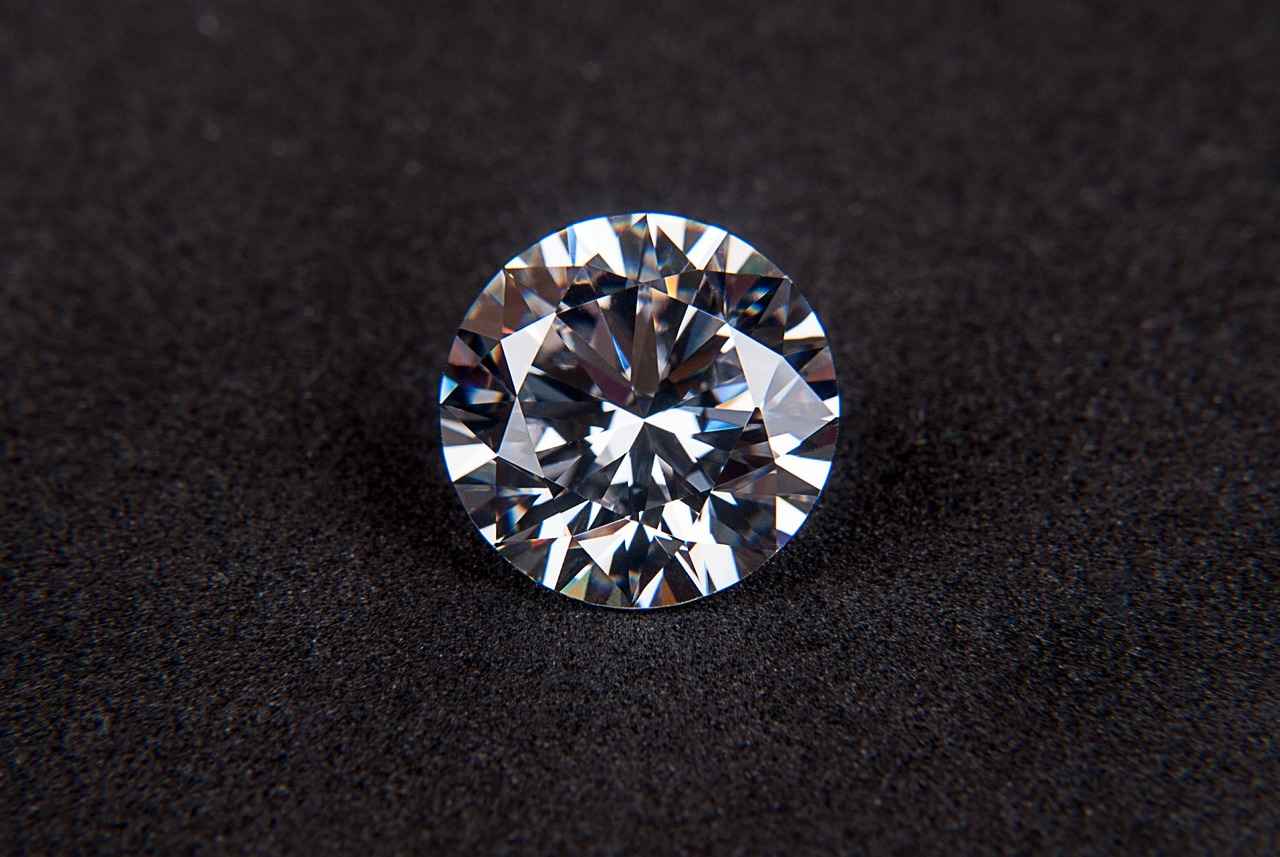
How Do White Diamonds Compare as an Investment?
When it comes to investing in gemstones, white diamonds have established themselves as a staple in the market. Their long-standing reputation as a reliable investment is backed by a combination of factors that contribute to their stability and demand. This article delves deeper into why white diamonds are favored by investors and how they compare to other types of diamonds.
White diamonds, also known as colorless diamonds, are often seen as a safe investment due to their consistent market performance. The primary factors contributing to their reliability include:
- Market Stability: White diamonds have demonstrated a steady appreciation in value over the years, making them less susceptible to market fluctuations compared to colored diamonds.
- Consistent Demand: The demand for white diamonds remains high, particularly in the jewelry sector. Their traditional association with engagements and weddings ensures a continuous market.
- Established Grading System: The value of white diamonds is assessed through the 4Cs—cut, color, clarity, and carat weight. This established grading system provides transparency and helps investors make informed decisions.
The market for white diamonds is influenced by various trends, which can impact their resale value:
- Fashion Trends: While classic styles maintain value, shifts in consumer preferences can affect demand. For instance, the rise of alternative engagement rings featuring colored stones has created a niche market.
- Economic Factors: Economic downturns can lead to a decrease in luxury spending, affecting the diamond market. However, white diamonds generally recover more quickly than their colored counterparts.
- Global Events: Events such as trade regulations and geopolitical tensions can influence diamond supply chains, thereby impacting prices.
Investing in white diamonds comes with its own set of advantages and disadvantages:
- Advantages:
- High liquidity: White diamonds can be easily sold, especially in established markets.
- Long-term value retention: Historically, white diamonds have shown resilience against market downturns.
- Disadvantages:
- Market saturation: The abundance of white diamonds can lead to reduced prices if the market is flooded.
- Potential for overvaluation: Investors may pay a premium for certain diamonds without understanding their actual market value.
The future of white diamonds as an investment appears promising, with several indicators suggesting continued demand. As more investors seek tangible assets, diamonds—especially white ones—may become increasingly attractive. Additionally, advancements in technology and grading methods are expected to enhance market transparency, further solidifying white diamonds’ position as a reliable investment.
In conclusion, while white diamonds are often viewed as a safer investment option, potential investors should remain vigilant and informed about market trends and factors that could affect their value. By understanding the dynamics of the diamond market, investors can make strategic decisions that align with their financial goals.
What Is the Historical Value Trend of White Diamonds?
White diamonds, also known as colorless diamonds, have long been regarded as a stable and traditional investment choice in the gemstone market. Their value retention over the years has made them a preferred option for many investors looking for a reliable asset. However, understanding the historical trends and factors affecting their value is essential for making informed investment decisions.
Historically, white diamonds have demonstrated steady value retention. This characteristic can be attributed to several factors, including their widespread popularity, consistent demand in the jewelry market, and the established grading system that evaluates their quality based on the 4Cs: cut, color, clarity, and carat weight. These elements not only influence the initial purchase price but also play a significant role in determining resale value over time.
Despite their overall stability, the market for white diamonds is not immune to fluctuations. Various external factors can impact their resale value, including:
- Market Trends: Changes in consumer preferences and economic conditions can lead to shifts in demand. For instance, during economic downturns, luxury items like diamonds may see decreased sales.
- Supply Chain Dynamics: The availability of white diamonds can fluctuate based on mining outputs and the discovery of new sources. A sudden increase in supply can drive prices down.
- Competition from Alternatives: The rise of lab-grown diamonds has introduced a new dynamic to the market, offering consumers a more affordable option. This competition can affect the perceived value of natural white diamonds.
In recent years, the market has witnessed a growing interest in colored diamonds, which has led some investors to question the long-term viability of white diamonds. While colored diamonds can offer higher returns due to their rarity, white diamonds still hold a significant place as a safer investment. Their historical value retention and established market presence provide a sense of security for those looking to invest in gemstones.
Moreover, the resale potential of white diamonds remains strong, particularly for high-quality stones. Diamonds with excellent cut and clarity often appreciate in value, making them attractive to both collectors and investors. It is essential for potential buyers to understand the grading system and seek certified diamonds to ensure authenticity and quality.
In conclusion, while white diamonds have shown a historical trend of steady value retention, investors should remain aware of the factors influencing their resale value. By staying informed about market dynamics and conducting thorough research, investors can make sound decisions that align with their financial goals.
Are White Diamonds a Safer Investment Compared to Colored Diamonds?
When considering investments in the diamond market, potential buyers often find themselves weighing the options between white diamonds and colored diamonds. Each type has its unique characteristics, investment potential, and market dynamics. This section delves into the comparative safety of white diamonds as an investment against the potential high returns offered by colored diamonds.
White diamonds, also referred to as colorless diamonds, have long been regarded as a stable investment option. Their value is primarily determined by the 4Cs: cut, color, clarity, and carat weight. These criteria provide a standardized method of evaluation, making it easier for investors to assess their worth. The demand for white diamonds remains consistently high, particularly in the engagement ring market. This enduring popularity contributes to their overall market stability.
On the other hand, colored diamonds are increasingly being recognized for their investment potential. Their rarity makes them appealing to collectors and investors alike. Unlike white diamonds, which are abundant, certain colored diamonds can fetch astonishing prices at auctions, especially those with vibrant hues like blue, pink, and green. The market for colored diamonds has shown significant growth, driven by a rising interest in unique gemstones.
While colored diamonds can offer higher returns, they also come with risks. The market for colored diamonds can be more volatile compared to white diamonds. Factors such as changing consumer preferences and economic conditions can impact their resale value. Additionally, the lack of standardized grading for colored diamonds can make it challenging for investors to determine their true worth. Investors must conduct thorough research and seek expert advice to navigate these complexities.
Investors often wonder if the potential for higher returns with colored diamonds outweighs the stability offered by white diamonds. While historical data suggests that certain colored diamonds have appreciated significantly over time, the unpredictable nature of their market can lead to fluctuations. In contrast, white diamonds tend to hold their value more consistently, making them a safer choice for those with a low-risk tolerance.
- Financial Goals: Investors should assess their financial objectives. Are they looking for long-term stability or are they willing to take risks for potentially higher returns?
- Market Research: Understanding current market trends and demands is crucial. Keeping abreast of industry news can provide insights into which type of diamond may perform better.
- Expert Consultation: Seeking advice from gemologists or investment advisors can help investors make informed decisions based on their individual circumstances.
Certification is vital for both white and colored diamonds. Reputable gemological laboratories provide certificates that verify a diamond’s quality and authenticity. For colored diamonds, certification can also indicate the intensity and hue, which are critical factors affecting their value. Investors should prioritize purchasing certified diamonds to ensure they are making sound investments.
In summary, while white diamonds generally offer more stability as an investment, colored diamonds can provide higher returns due to their rarity and increasing demand. Investors must carefully evaluate their financial goals and risk tolerance to make the best choice for their portfolios.
Frequently Asked Questions
- What is the main difference between colored diamonds and white diamonds?
Colored diamonds are rare gemstones that come in various hues, while white diamonds, or colorless diamonds, are more common and valued based on the 4Cs: cut, color, clarity, and carat weight.
- Why are colored diamonds considered a better investment?
Colored diamonds are significantly rarer than white diamonds, and their unique colors can lead to higher market values and investment potential, especially as demand increases.
- How does market demand affect the value of white diamonds?
While white diamonds are abundant, they are still in high demand, particularly for engagement rings. Market trends can shift, impacting their resale value and overall appeal.
- What factors should I consider when investing in colored diamonds?
When investing in colored diamonds, consider factors like color intensity, hue, saturation, and certification from reputable gemological laboratories to ensure authenticity and quality.
- Are white diamonds a safer investment than colored diamonds?
White diamonds generally offer more stability and consistent demand, making them a safer choice. However, colored diamonds can yield higher returns due to their rarity, depending on your financial goals.

